Welterbemuseum Hallstatt – The World Heritage Museum
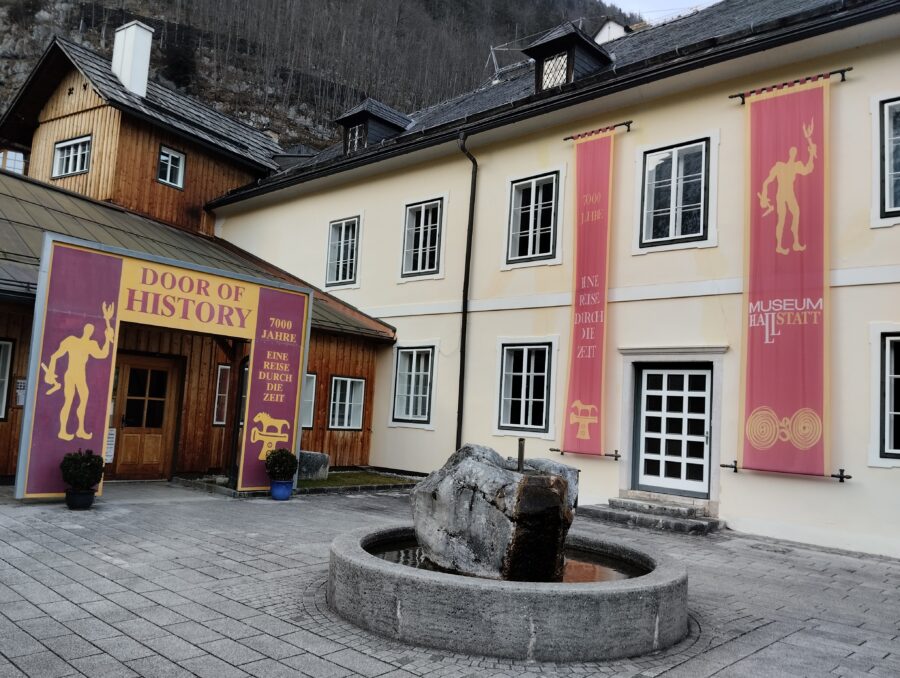
Welcome to the world of Welterbemuseum Hallstatt, a museum that holds the cultural and historical treasures of the Hallstatt-Dachstein/Salzkammergut region of Austria. This museum is a must-visit destination for anyone who loves to explore the ancient and fascinating world of archaeology. Nestled in the heart of Hallstatt, a UNESCO world heritage site, this museum is a gateway to the rich cultural history of the region.
With its collection of artifacts, exhibits, and interactive displays, the Welterbemuseum Hallstatt offers visitors a unique opportunity to experience the rich history of Hallstatt and its surrounding areas. Join us on a journey through the World Heritage Museum as we unveil the treasures hidden within its walls. From the prehistoric era to the modern-day, this museum offers a glimpse into the past that is sure to leave you in awe. So, come along and explore the wonders of Welterbemuseum Hallstatt with us!
History of the Hallstatt-Dachstein/Salzkammergut region
The Hallstatt-Dachstein/Salzkammergut region is a beautiful and picturesque area of Austria. The area is famous for its for its stunning landscapes, crystal-clear lakes, and the rich cultural history that it holds. Various civilizations have come and gone in the region that since prehistoric times.
The Hallstatt culture, which flourished in the region during the early Iron Age, is one of the most significant cultural periods in European prehistory. The Hallstatt region is famous for its salt mines, which have been in operation since ancient times.
The significance of the Welterbemuseum Hallstatt
The museum is in a historic building that was once a salt warehouse. The building has been restored and renovated to house the museum’s extensive collection of artifacts and exhibits. The museum’s mission is to provide visitors with a comprehensive understanding of the region’s cultural history, from prehistoric times to the modern-day. The Hallstatt area is archaeological heritage. Its salt production and its significance as a center of prehistoric European culture with rich historical development.
The Hallstatt Museum looks back on a long and eventful history and diverse culture of the Hallstatt region – you may not know, that this historical village dates back more than 7,000 years! The museum impressively presents the history of the Hallstatt, its salt mining and life of the local miners. Salt mining industry has been a major part of the Hallstatt region’s economy for thousands of years!
You can learn about the techniques and tools used to extract salt from the mines and you will also find here unbeatable collection of discoveries from the local salt mines and from the cemeteries of Iron Age –> these finds were so important, that an entire culture period was named after this area – the Hallstatt culture (850 – 500 BC)!
At present the museum has a total of 26 main themes – from the Neolithic developments and prehistoric salt mining through the age of Celtic salt miners and Roman era to the time of the “white gold” salt traders and finally to modern times and its meaningful explorers of the Hallstatt history and culture.
Location of Welterbemuseum Hallstatt
As has been already mentioned, the Hallstatt museum is located right in the centre of Hallstatt, close to Lake Hallstatt and below the salt mines on the mountainside.
address: Museum Hallstatt, Seestraße 56, 4830, Hallstatt
tel. +43(0) 6134 8280
e-mail: kontakt@museumhallstatt.at
Collections and exhibits at the museum
The Welterbemuseum Hallstatt has an extensive collection of artifacts and exhibits that are organized into several galleries. The galleries include the prehistoric gallery, the Hallstatt gallery, the Celtic gallery, the Roman gallery, the medieval gallery, salty beings, coinage, modern salt mining, work and crafts, tourism and nature as a habitat for world heritage crafts. Each gallery provides a unique insight into the cultural and historical heritage of the region.
Interactive displays and experiences at the museum
A visit to the Hallstatt museum is an educational experience for the whole family! During your visit, you can explore so many interesting exhibits in an interesting and informative way with impressive use of multimedia techniques.
You may be surprised and fascinated by visual and acoustic stimuli during the tour –> video animations, holographic representations and three-dimensional presentations are always used here! So you can be sure, that museum will attract even your children´s attention!
Highlights of the museum – must-see exhibits and artifacts
The Welterbemuseum Hallstatt has several must-see exhibits and artifacts that are sure to leave visitors in awe.
One of the most impressive exhibits is the replica of a Hallstatt grave. The grave contains a rich collection of artifacts, including bronze vessels, jewelry, and weapons.
Another must-see exhibit is the salt mine replica. Visitors can explore the mine and learn about the history of salt mining in the region.
The museum also has a collection of Celtic jewelry that is considered one of the most extensive collections in the world. The collection includes intricate gold torques, bracelets, and necklaces.
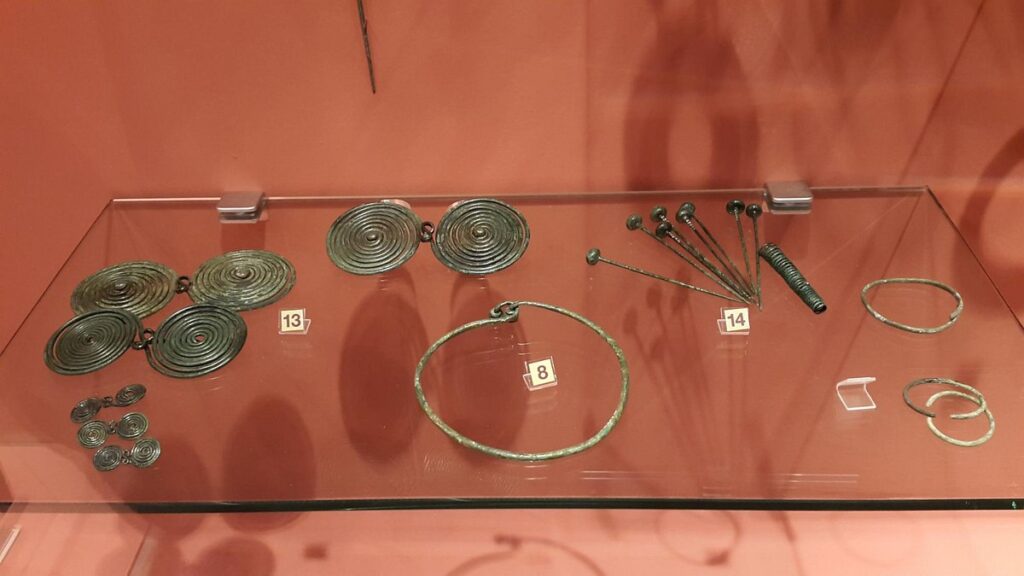
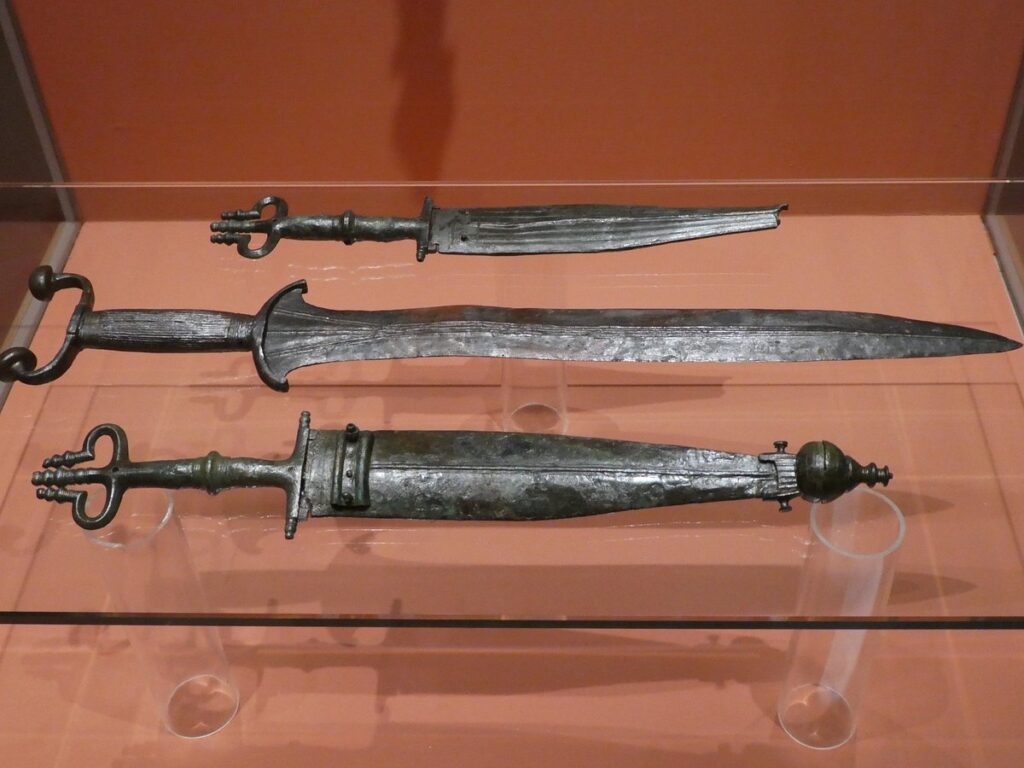
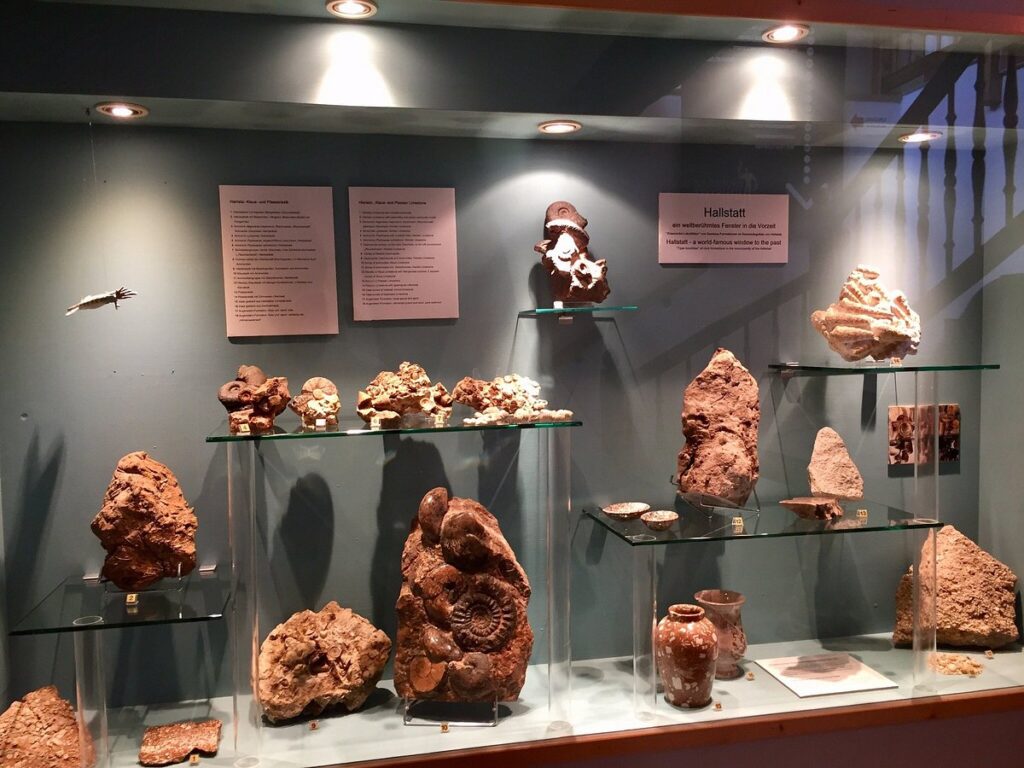
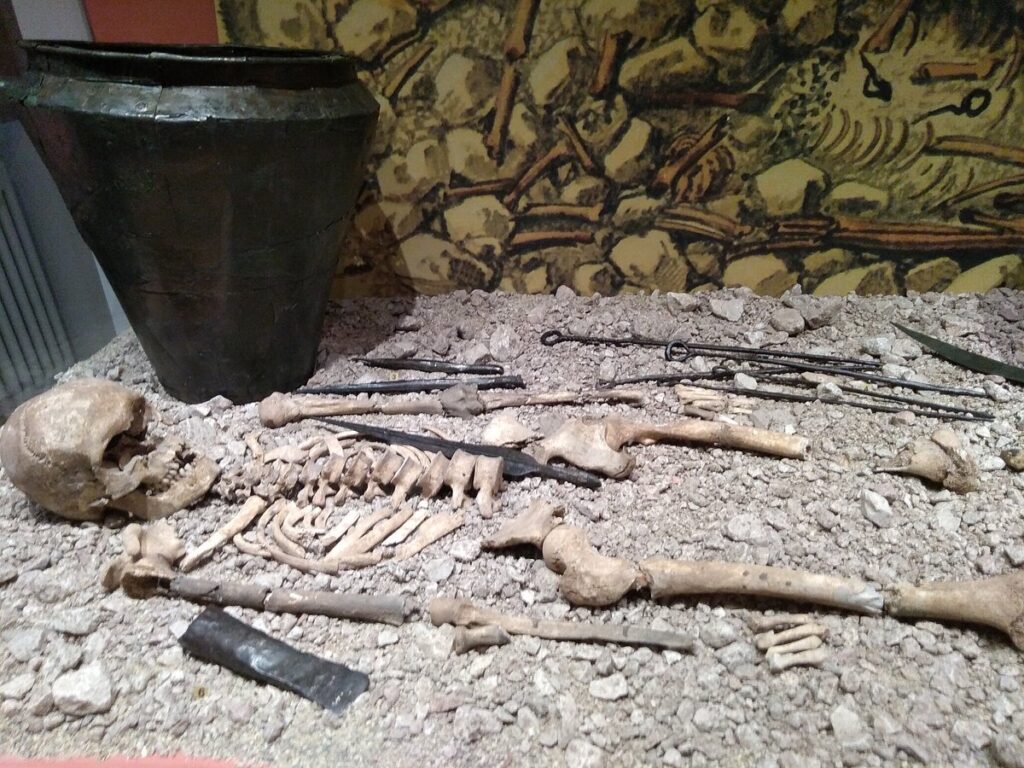
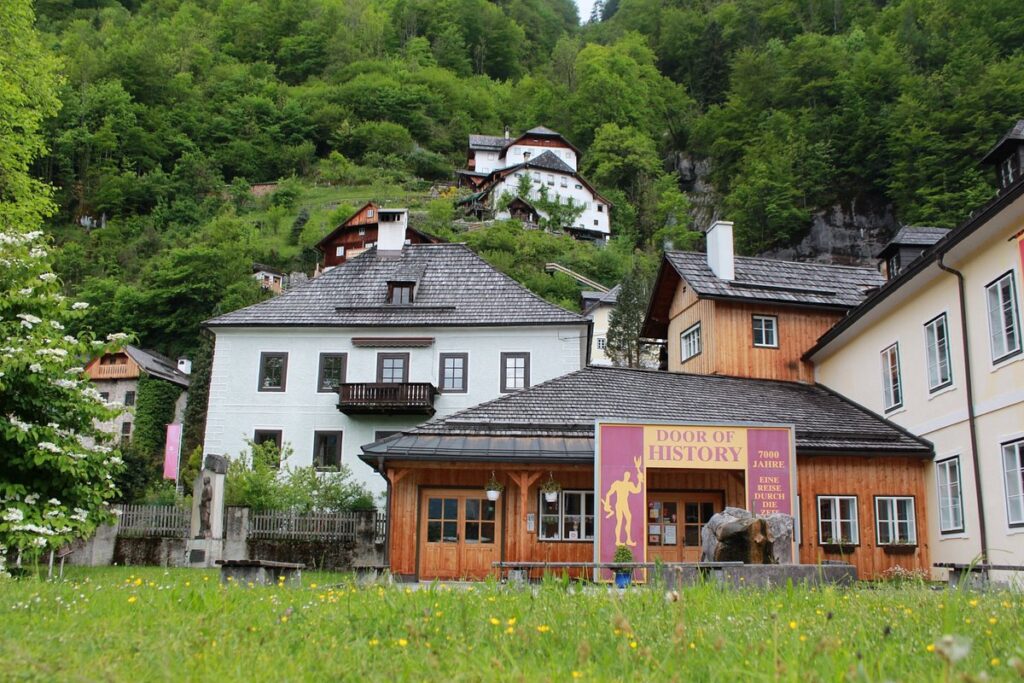
Central elements for children and young people
Because a lot of attention is focused on cultural education, the museum offers “epoch studio” and “museum rally” for children and young people.
Epoch studio:
This central element brings an opportunity to practically experience and implement main points of the exhibition. They´ll get to know working techniques from prehistory to present.
Museum rally:
This element is designed especially for schoolchildren. They can explore and research, in small groups of two or three, interesting topics independently and then present their research results during the tour.
Time duration of the excursion
The excursion will take around one hour of your time.
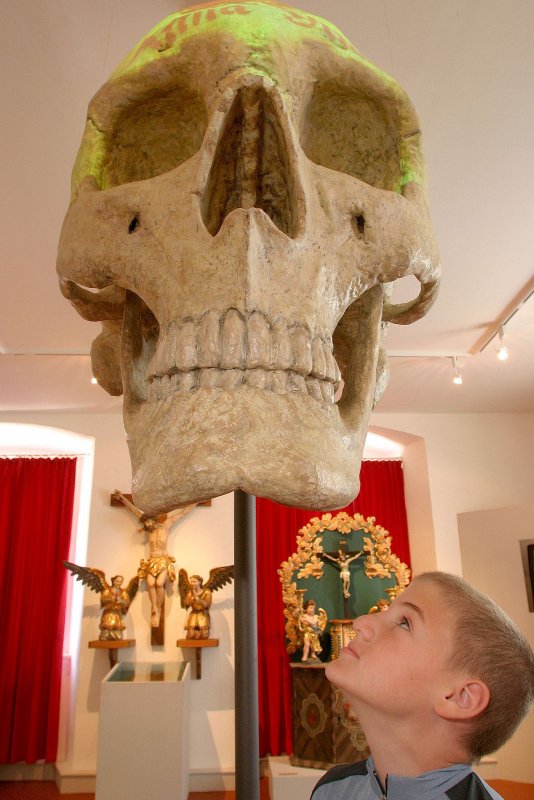
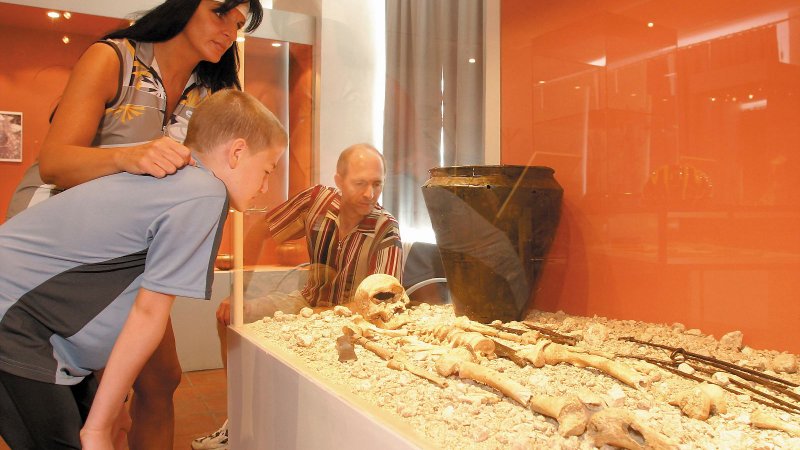
History of the Welterbemuseum Hallstatt
The museum was founded in 1846 by Johann Georg Ramsauer, who was the director of the salt mines in Hallstatt at that time.
It was Ramsauer who has discovered a large burial site in the nearby mountains that contained the remains of hundreds of people, along with artifacts such as pottery, tools, and jewelry. Recognizing the significance of these finds, he decided to create a museum to showcase them and educate the public about the Hallstatt period. Then the museum was established in 1884 and the historic building was originally used as a salt warehouse.
Over the years, the museum has undergone several renovations and expansions. Museum reopened after extensive renovation in 2002. And the most recent renovation was in 2013. Today, the museum features exhibits that explore the lives and customs of the Hallstatt people. Including their mining and metalworking techniques, their social and religious practices, and their artistic and cultural achievements.
In prehistoric times, Hallstatt was not on the shores of the lake as it is today, but high above today’s town in the mountains. It was the location what made the Hallstatt site so important for prehistoric and early historic research.
The role of archaeology in understanding the history of the region
Archaeology plays a significant role in understanding the cultural and historical heritage of the Hallstatt-Dachstein/Salzkammergut region. Archaeological excavations have uncovered artifacts and structures that provide valuable insights into the region’s past. The Welterbemuseum Hallstatt has a dedicated team of archaeologists. They are doing ongoing research and excavation projects in the region.
Visiting the museum – practical information and tips
The Welterbemuseum Hallstatt is open daily except for Christmas and New Year’s Day. The museum’s admission fee is €10 for adults and €8 for children. The museum offers guided tours in German and English. Visitors can also rent audio guides that provide additional information about the exhibits and artifacts. The museum is wheelchair accessible, and there are several parking areas nearby. Visitors should plan to spend at least two hours at the museum to fully appreciate its exhibits and interactive displays.
Welterbemuseum Hallstatt opening hours
November to March: 11:00 – 15:00 (Monday, Tuesday closed).
April: 10:00 – 16:00 (daily)
May to September: 10:00 – 18:00 (daily)
October: 10:00 – 16:00 (daily)
Welterbemuseum Hallstatt opening tickets
Adults € 10,-
Groups /from 10 persons/ € 9,-
Guest card holders € 9,-
Seniors from 60 € 9,-
Children, students € 8,- (!valid photo identification required!)
Pupils in class € 5,-
Families € 20,-
Payment methods –> cash, debit/credit cards
Events and activities at the Welterbemuseum Hallstatt
The Welterbemuseum Hallstatt hosts several events and activities throughout the year. Right now there is special exhibition: 400 years of the privileged rifle club Hallstatt – a tradition since 1620
interesting exhibits about the association – rifles, shooting targets, photographs, original documents, replica of part of the zielergraben. You can visit the special exhibition until October 31, 2023 during the opening hours of the World Heritage Museum Hallstatt.
Reviews of Welterbemuseum Hallstatt
- Interesting stories about pre-history and salt mining, told partly based on the excavations of ancient graves near the town. Worth an hour’s visit.
- When in Hallstatt it is worth visiting this small museum right in the centre, you can’t really miss its doorway, and see exhibits and facts about Hallstatt and its salt mining etc.
- The museum, located not far from the main square, has an interesting exhibition and displays that can be traced back thousands of years ago and how then, salt mining was it’s main business trade of this town. Though compared to other museums, it’s not as big in size, it surely has an wonderful and unique collection that you may find get to see elsewhere. It’s a good and interesting visit and visitors will get to expand their knowledge bank!
- Very insightful and engaging museum that shows the history of the Hallstatt village along the years. The tickets are affordable and the museum is larger than you expect, it looks small from the outside but it took us an hour to see everything.
- Very nice little museum. When the weather is nice, cool and you can walk through it almost alone. Definitely worth a visit!
Conclusion – why the Welterbemuseum Hallstatt is a must-visit destination for history and archaeology enthusiasts.
If you love exploring the cultural and historical heritage of the Hallstatt-Dachstein/Salzkammergut region, you cannot miss visiting the Welterbemuseum Hallstatt.
The museum’s extensive collection of artifacts, exhibits, and interactive displays provides a unique opportunity to experience the region’s rich history. The museum’s dedication to promoting public awareness of archaeology and its role in understanding the past makes it a valuable educational resource for visitors of all ages.
Overall, the Hallstatt Museum is an important cultural institution that provides valuable insights into the history of the Hallstatt period and the people who lived during this fascinating era.
Museum visit is an adventurous journey through time, using modern means to bring everything to life! So when you are in Hallstatt, come to enjoy the memorable journey through time! Explore the wonders of Welterbemuseum Hallstatt.
Other activites nearby
If you would like to visit the Hallstatt museum, you can also explore the nearby Hallstatt Salt Mine, which is one of the oldest salt mines in the world! This salt mine has been in operation since prehistoric era and offers guided tours.